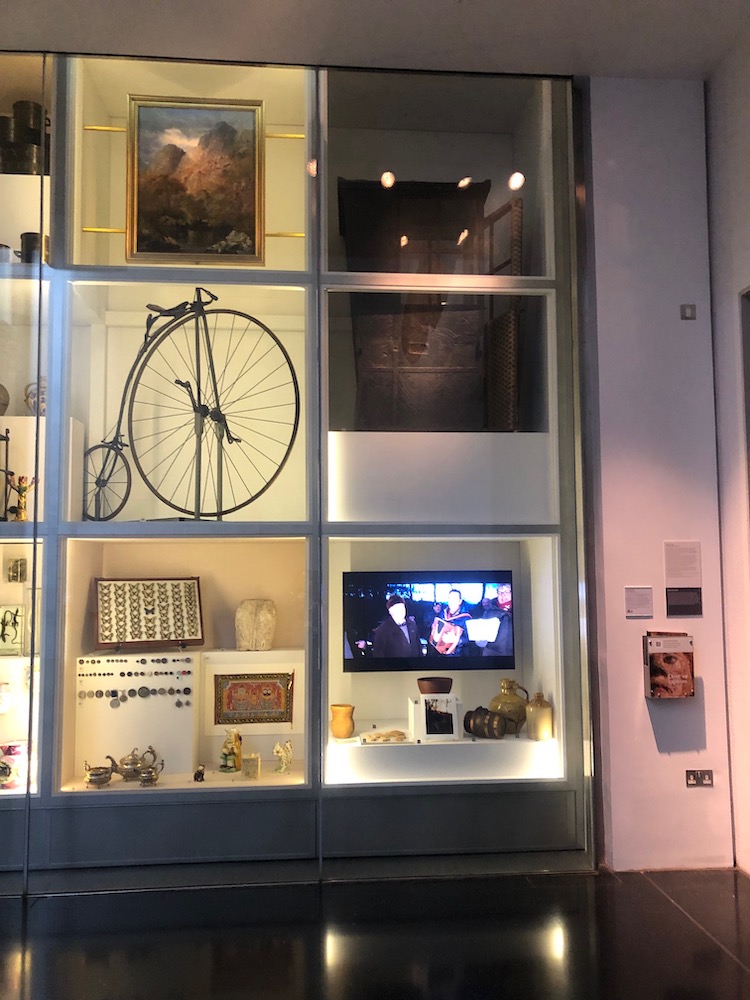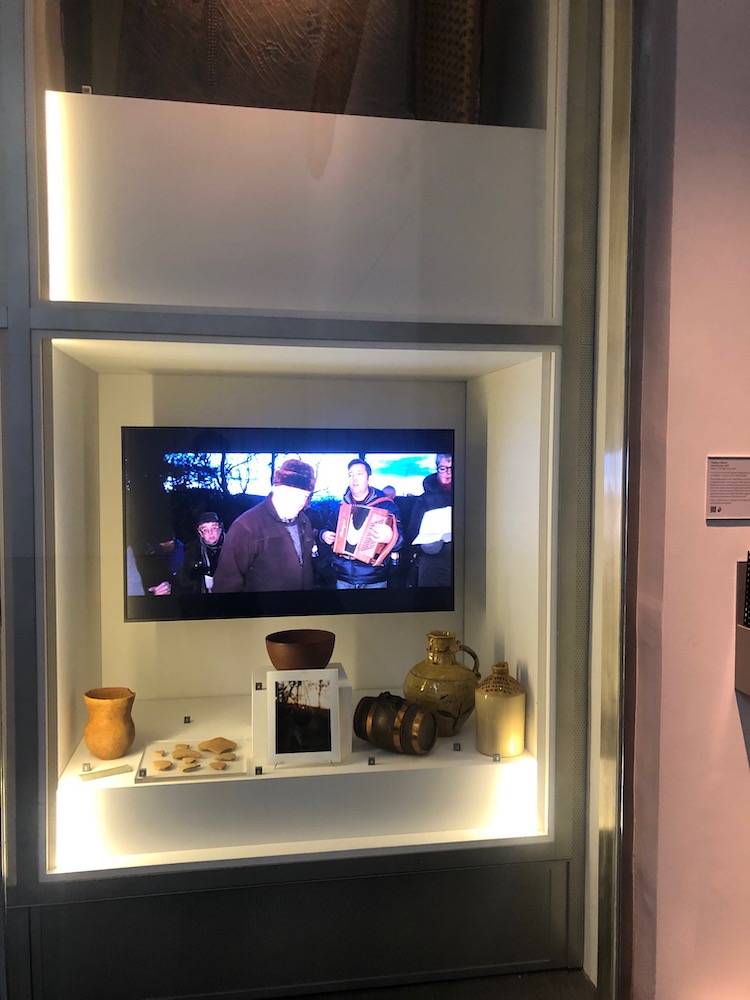THE DISPLAY
Following the wassail at Halstow, at the end of January 2022, a new display was installed at RAMM, to present artefacts from HERE'S TO THEE with those from the museum's collections. The display included a small print of one of Robert Darch's photographs from the first wassail (2020), a screen showing Bevis Bowden's film (2022), along with Abigail North's Halstow Wassail Bowl (2019). These functioned as signposts towards the live components of the project, while other objects in the cabinet brought them into relation to the museum's collections. §
ARTEFACTS FROM THE COLLECTION
Thomas Cadbury, Assistant curator at RAMM, selected a range of objects from the museum collections – historical examples of the material culture of communal- and cider-drinking in Devon – details of which are included below. At the beginnning of the project, Simon and Abigail met Thomas at the museum's stores in Exeter, where these objects were among those that inspired conversation and practical work during the development of Abigail's ceramic work. §
All photos courtesy of RAMM. Descriptions based on those provided by RAMM.
 Beaker from Cranbrook.
Beaker from Cranbrook.
This Early Bronze Age bowl from Cranbrook, (near Exeter) accompanied Abigail North's Halstow Wassail bowl when installed at RAMM.. While our project is concerned with human-microbial relationships – especially the politics and socialities of this – we draw heavily on wassailing conventions, based on the veneration of apples and apple trees, as a way to draw these things into alignment. Tom's choice of bowl chimes exactly with some interpretations of this wassailing tradition, in that it was found at a site where there is evidence of ritual activity, dating from the Mesolithic and Early Bronze Age, 'the focal point of which appeared to be a large tree' (as Diana King states in her archaeological report of 2016 ©Foundations Archaeology). These rituals included the depositing of vessels and flints in the tree's root-system. In later periods, and once the sacred tree had fallen, it was replaced by a pillar – most likely to have been wooden – around which further ritual activity was undertaken. The bowl selected by Tom is thought to have been used for communal drinking, and deposited as part of a Beaker-period burial. More information is available here, from the RAMM collections website. §
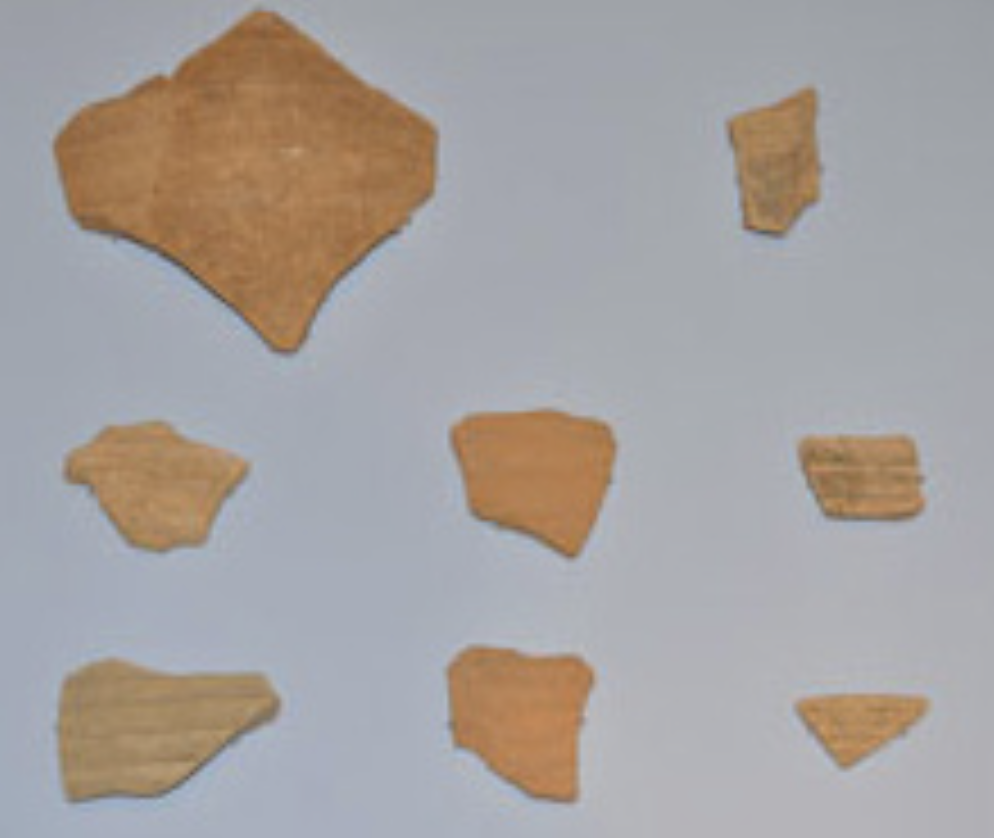 Fragments of late Roman amphora from High Peak, Sidmouth
Fragments of late Roman amphora from High Peak, Sidmouth
These fragments date from many decades after the Roman administration of Britain had collapsed. They were found in considerable quantities alongside many animal bones and seem to be evidence of feasting at this prominent landmark. The amphora come from the Mediterranean and are evidence that there was continual, although irregular, contact between Mediterranean and Devon communities. We can only speculate whether this was for kinship, marriage, trade, political reasons. Similar material has been found at Burgh Island, another prominent feature of the South Devon coast. §
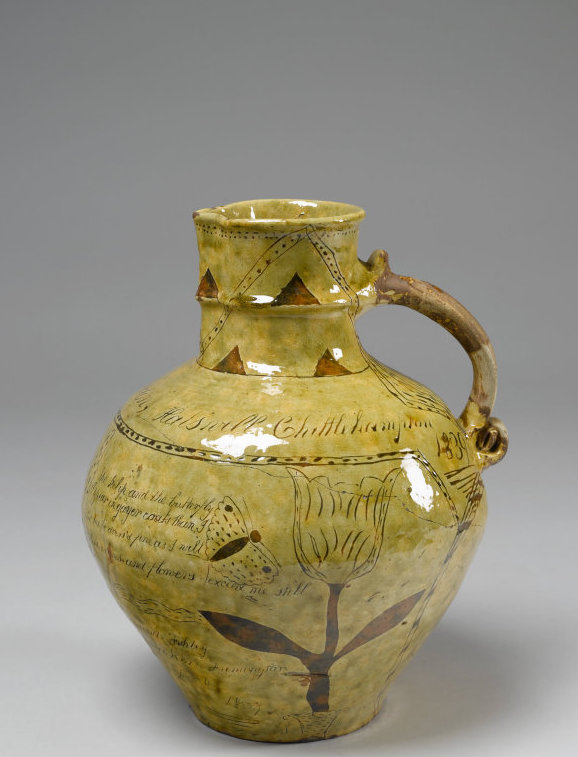 Harvest jug
Harvest jug
Harvest jugs such as this were produced by the potteries of Barnstaple and Bideford to hold the ale or cider for celebrations.
The inscription on this one reads:
“Wm Mildon Halswell Chittlehampton 1839 The tulip and the butterfly / Appear in gayer coats than I / Let me be dressed fine as I will / Flies, worms and flowers exceed me still Long may you live / Happy may you be / Bless with Content / And from misfortunes / Free This little jug in friendship take / And keep it for / the given sake / Rebecca Searle / June 6th / 1839”
More information is available here, from the RAMM collections website. §
 Cider flagons
Cider flagons
This is the kind of cider flagon supplied by many breweries and cider-makers. They are robust, come in all sizes and were made in large numbers. This example was made between 1890 and 1920, for the St Anne’s Well Brewery, Exeter. Accession number: 121/2002.1 and 1143/1974. §
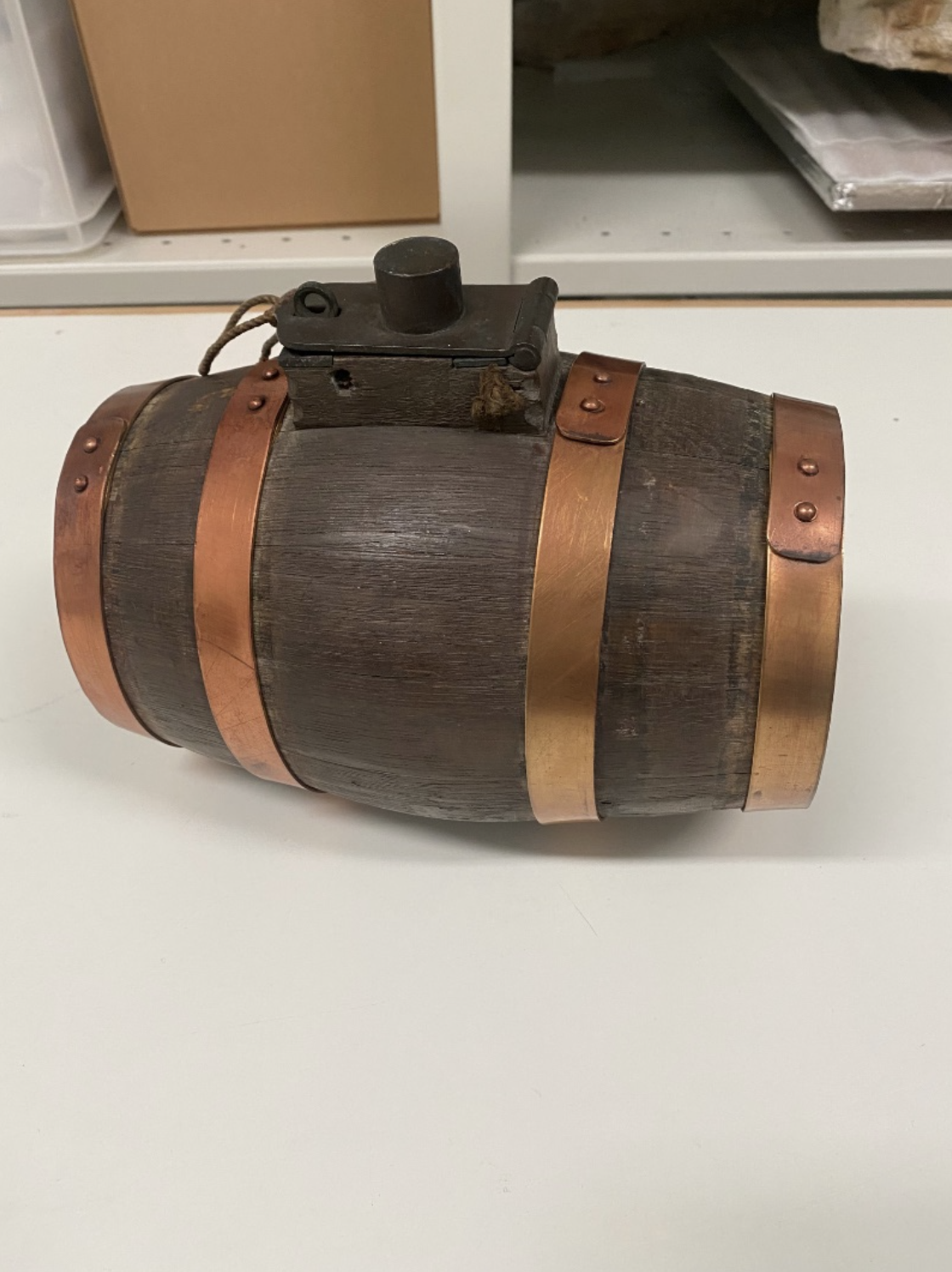 Cider firkin
Cider firkin
This is the typical type of wooden cider firkin taken out to the fields by agricultural workers, near Matford, Exeter in early part of 20th century. There is oral history connected to this object. The owner was working in the fields during May 1942 and remembered the clouds of smoke coming from the city. §
Views of the cabinet at RAMM
